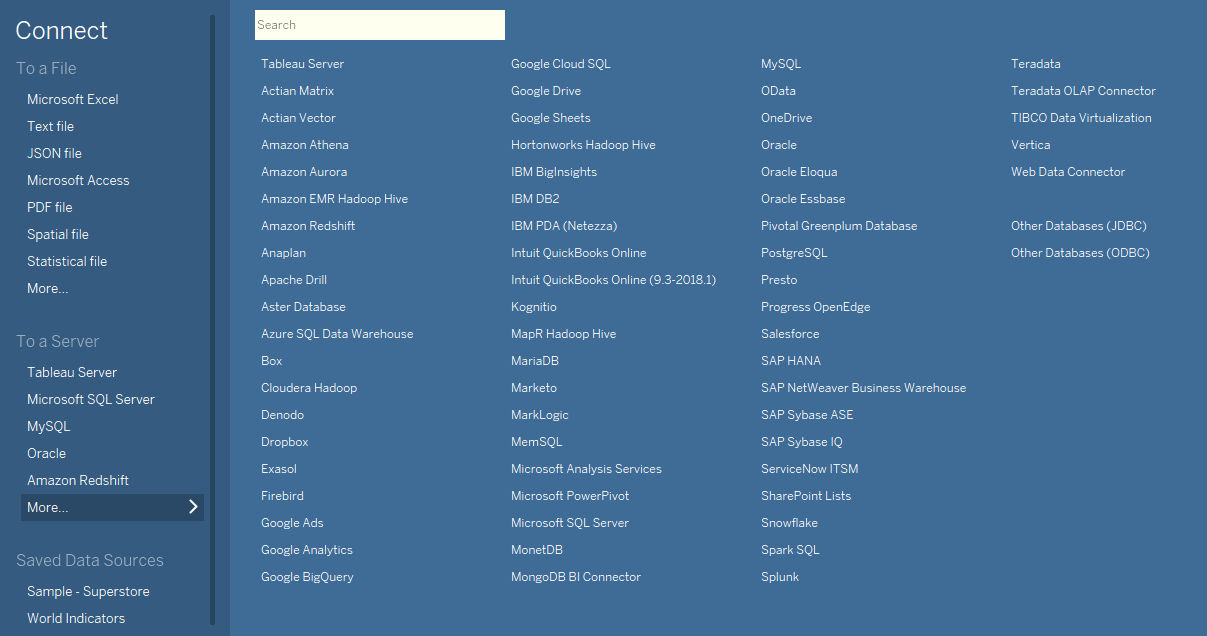Data Connection with Data SourcesTableau can connect with all the accessible data sources which are broadly used. It can link to Excel files, PDF files, text files, etc. It can also connect to various databases using its ODBC connector. Tableau can connect to web connectors and servers. Tableaus native connectors can connect to the following types of data sources:
The given below picture shows all of the data sources available through Tableau's native data connectors. 
Connect LiveThe Connect Live feature is used in real-time data analysis. In connect live case, Tableau connects with the real-time data source, and it keeps read the data. Thus, the result of the data analysis is up to the second, and the latest changes are reflected in this result. However, on the drawback, it's the source system as it has to keep send the data to Tableau. In-MemoryTableau can also process the data in-memory by caching them in memory, and it not being connected to the source anymore while analyzing the data. Of course, there will be a limit on the amount of data cached depending on the availability of the memory. Combine Data SourcesTableau can connect with different data sources at the same time. For example: In a single workbook, you can connect to a relational source and a flat file by defined the multiple connections. This is also used in data blending, which is a unique feature in Tableau.
Next TopicData Connection with Text File
|
 For Videos Join Our Youtube Channel: Join Now
For Videos Join Our Youtube Channel: Join Now
Feedback
- Send your Feedback to [email protected]
Help Others, Please Share










